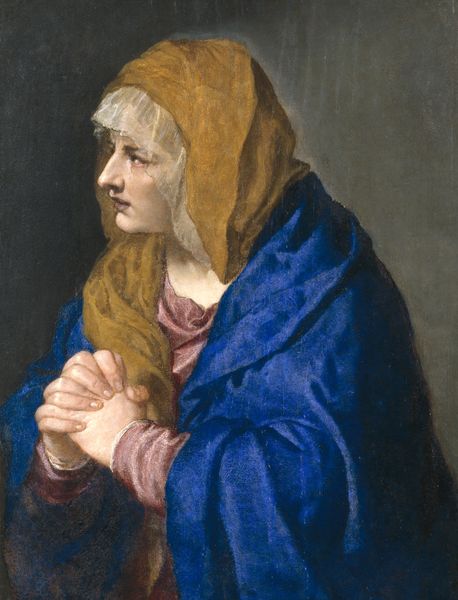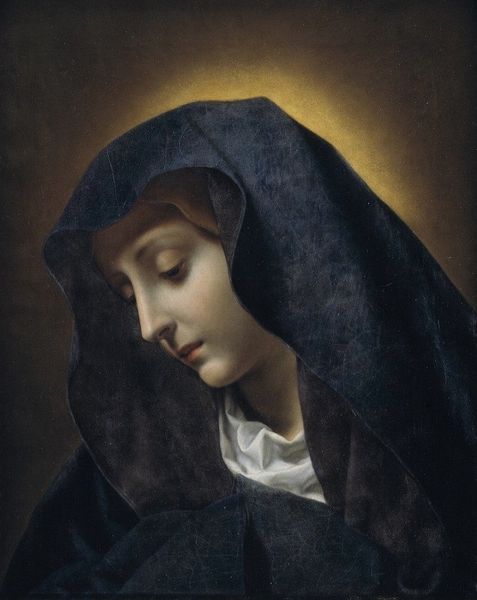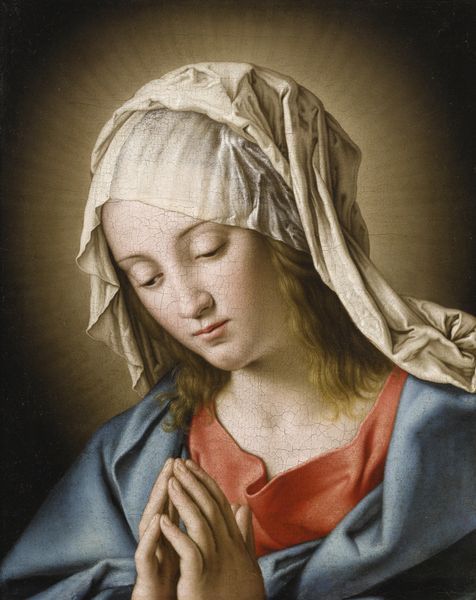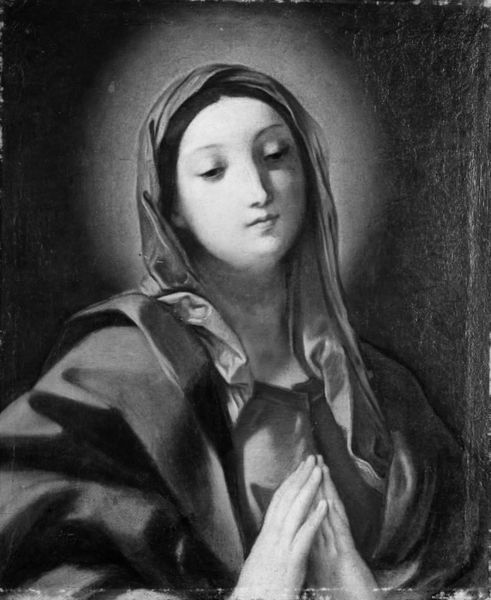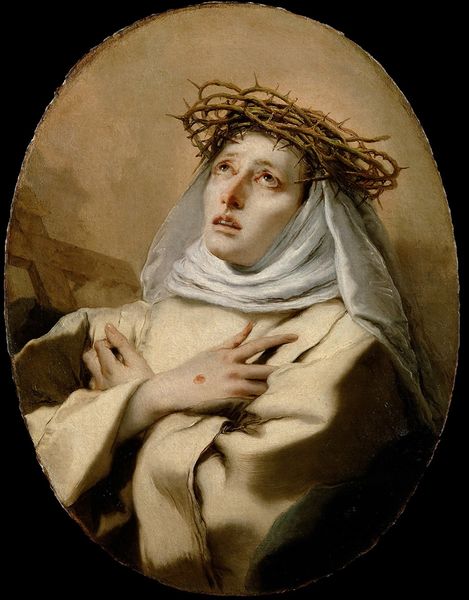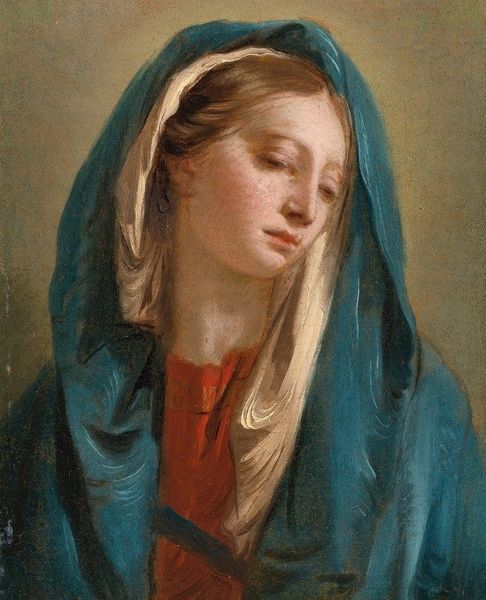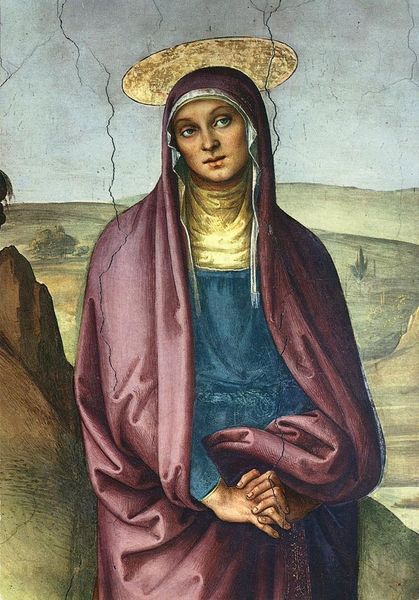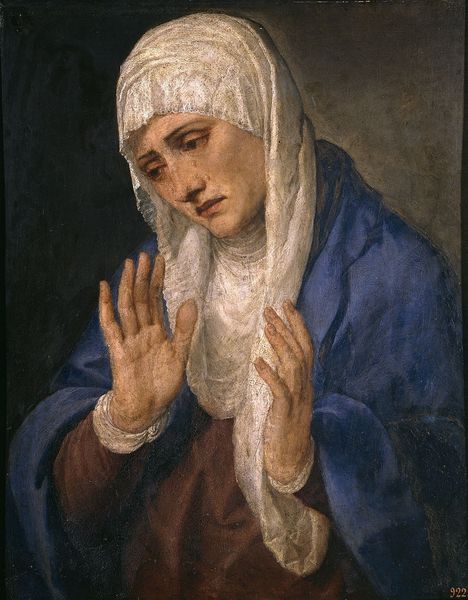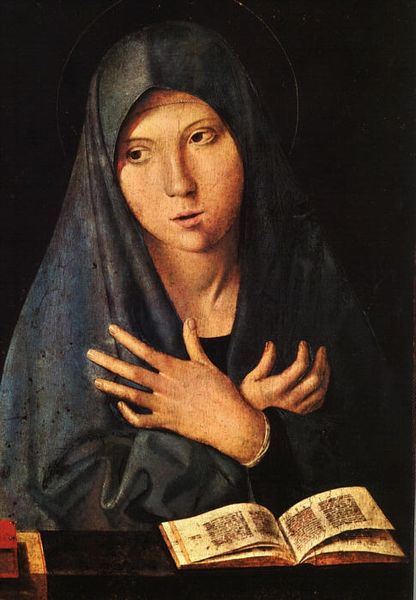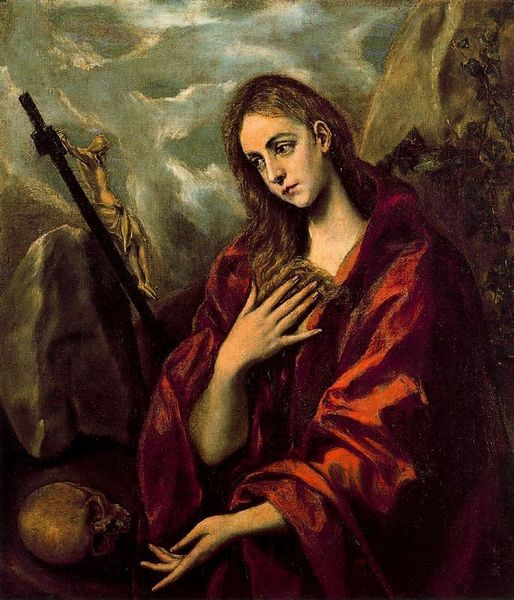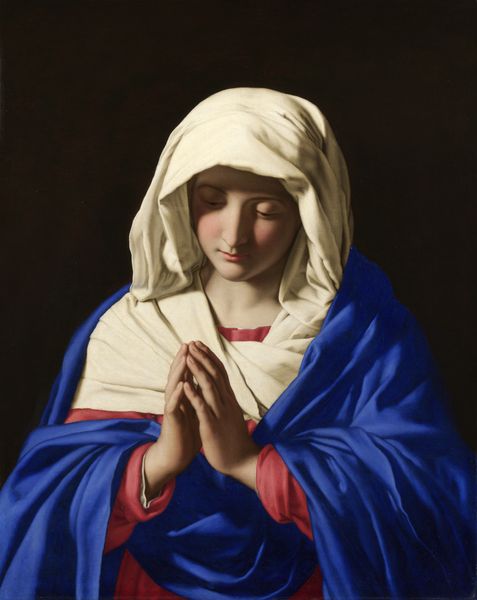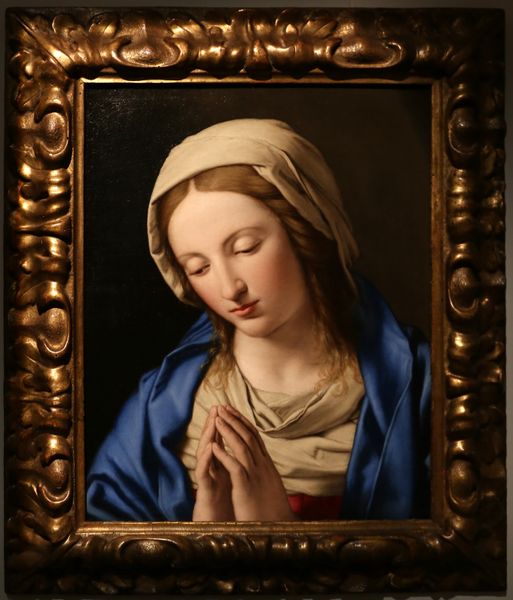
painting, oil-paint
#
portrait
#
baroque
#
painting
#
oil-paint
#
history-painting
#
miniature
Copyright: Public domain
Editor: Here we have Giuseppe Maria Crespi's "Virgin with the Instruments of the Passion," painted around 1730 using oil paint. It strikes me as incredibly sorrowful. What particularly stands out to you? Curator: I see the weight of material suffering reflected in Crespi’s use of oil paint itself. Notice the layers; the build-up mirroring the accumulation of sorrow and the heavy tools of the Passion displayed. How does the tactile nature of the medium contribute to the emotional weight, would you say? Editor: It definitely amplifies the Virgin’s distress, making it feel palpable. But I'm curious, what about the production? Was Crespi working in a vacuum? Curator: Not at all. The tools around her–the nails, the crown of thorns – all manufactured objects. They tell a story about labor, production, and demand in 18th-century Bologna. What kind of workshops created these objects for religious ritual, and how were they circulated? This image prompts those questions, wouldn’t you say? Editor: Yes, I hadn’t considered the labor aspect so explicitly, the economic system that produced the objects displayed in the artwork. Curator: And think of the canvas itself: its production, distribution, and the very act of acquiring it becomes part of this image’s story. How does considering these mundane aspects reshape our understanding of the sacred, do you think? Editor: That's a profound reframing. Viewing it as more than a religious depiction but also a record of production and consumption gives it a whole other level of meaning. Thanks, this was very insightful! Curator: Absolutely! Examining art through the lens of materials and production opens fascinating perspectives on its meaning and cultural context.
Comments
No comments
Be the first to comment and join the conversation on the ultimate creative platform.
